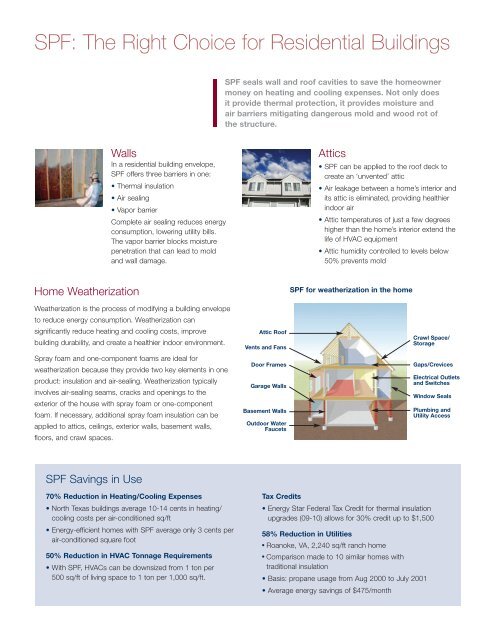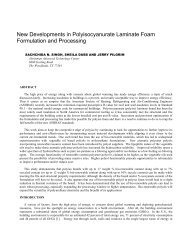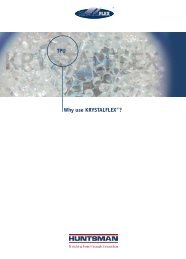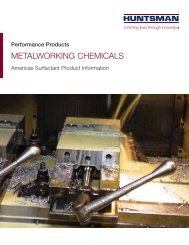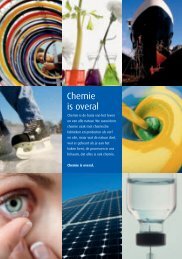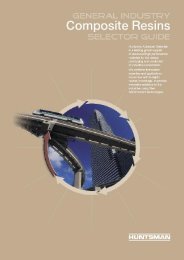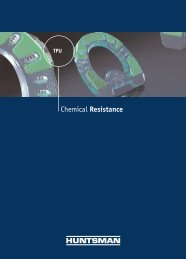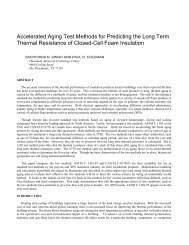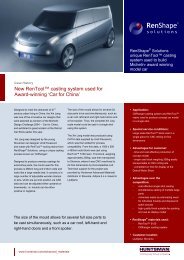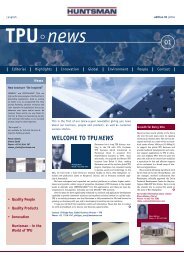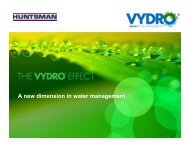Spray Polyurethane Foam Insulation
Spray Polyurethane Foam Insulation
Spray Polyurethane Foam Insulation
Create successful ePaper yourself
Turn your PDF publications into a flip-book with our unique Google optimized e-Paper software.
SPF: The Right Choice for Residential Buildings<br />
Home Weatherization<br />
SPF Savings in Use<br />
Walls<br />
In a residential building envelope,<br />
SPF offers three barriers in one:<br />
• Thermal insulation<br />
• Air sealing<br />
• Vapor barrier<br />
Complete air sealing reduces energy<br />
consumption, lowering utility bills.<br />
The vapor barrier blocks moisture<br />
penetration that can lead to mold<br />
and wall damage.<br />
Weatherization is the process of modifying a building envelope<br />
to reduce energy consumption. Weatherization can<br />
significantly reduce heating and cooling costs, improve<br />
building durability, and create a healthier indoor environment.<br />
<strong>Spray</strong> foam and one-component foams are ideal for<br />
weatherization because they provide two key elements in one<br />
product: insulation and air-sealing. Weatherization typically<br />
involves air-sealing seams, cracks and openings to the<br />
exterior of the house with spray foam or one-component<br />
foam. If necessary, additional spray foam insulation can be<br />
applied to attics, ceilings, exterior walls, basement walls,<br />
floors, and crawl spaces.<br />
70% Reduction in Heating/Cooling Expenses<br />
• North Texas buildings average 10-14 cents in heating/<br />
cooling costs per air-conditioned sq/ft<br />
• Energy-efficient homes with SPF average only 3 cents per<br />
air-conditioned square foot<br />
50% Reduction in HVAC Tonnage Requirements<br />
• With SPF, HVACs can be downsized from 1 ton per<br />
500 sq/ft of living space to 1 ton per 1,000 sq/ft.<br />
SPF seals wall and roof cavities to save the homeowner<br />
money on heating and cooling expenses. Not only does<br />
it provide thermal protection, it provides moisture and<br />
air barriers mitigating dangerous mold and wood rot of<br />
the structure.<br />
Attic Roof<br />
Vents and Fans<br />
Door Frames<br />
Garage Walls<br />
Basement Walls<br />
Outdoor Water<br />
Faucets<br />
Attics<br />
• SPF can be applied to the roof deck to<br />
create an ‘unvented’ attic<br />
• Air leakage between a home’s interior and<br />
its attic is eliminated, providing healthier<br />
indoor air<br />
• Attic temperatures of just a few degrees<br />
higher than the home’s interior extend the<br />
life of HVAC equipment<br />
• Attic humidity controlled to levels below<br />
50% prevents mold<br />
SPF for weatherization in the home<br />
Tax Credits<br />
• Energy Star Federal Tax Credit for thermal insulation<br />
upgrades (09-10) allows for 30% credit up to $1,500<br />
58% Reduction in Utilities<br />
• Roanoke, VA, 2,240 sq/ft ranch home<br />
• Comparison made to 10 similar homes with<br />
traditional insulation<br />
• Basis: propane usage from Aug 2000 to July 2001<br />
• Average energy savings of $475/month<br />
Crawl Space/<br />
Storage<br />
Gaps/Crevices<br />
Electrical Outlets<br />
and Switches<br />
Window Seals<br />
Plumbing and<br />
Utility Access


